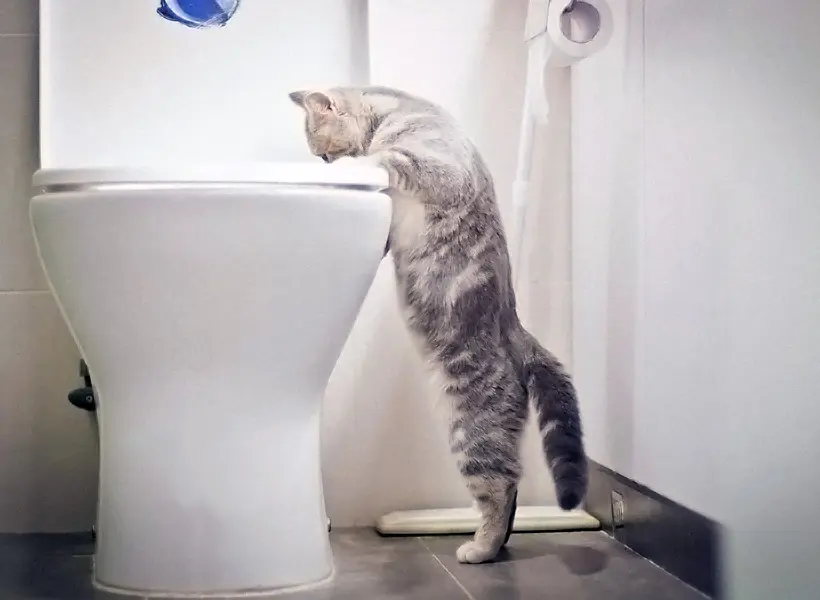Why Flushing Cat Poop Down Your Toilet Is Harmful - Tips for Correct Handling
Why Flushing Cat Poop Down Your Toilet Is Harmful - Tips for Correct Handling
Blog Article
We've stumbled upon the article involving How to Dispose of Cat Poop and Litter Without Plastic Bags down the page on the web and decided it made perfect sense to share it with you here.
Introduction
As cat proprietors, it's vital to be mindful of how we dispose of our feline pals' waste. While it may appear convenient to flush cat poop down the toilet, this practice can have detrimental consequences for both the environment and human health.
Alternatives to Flushing
Fortunately, there are more secure and much more accountable ways to deal with cat poop. Take into consideration the following alternatives:
1. Scoop and Dispose in Trash
One of the most typical approach of disposing of cat poop is to scoop it into a naturally degradable bag and throw it in the trash. Make certain to utilize a committed litter inside story and get rid of the waste immediately.
2. Use Biodegradable Litter
Select biodegradable pet cat trash made from products such as corn or wheat. These trashes are eco-friendly and can be safely gotten rid of in the garbage.
3. Bury in the Yard
If you have a yard, consider hiding cat waste in an assigned location far from vegetable gardens and water sources. Be sure to dig deep enough to prevent contamination of groundwater.
4. Set Up a Pet Waste Disposal System
Buy an animal garbage disposal system especially created for feline waste. These systems use enzymes to break down the waste, reducing odor and environmental effect.
Wellness Risks
In addition to ecological worries, flushing feline waste can likewise position health dangers to human beings. Feline feces may have Toxoplasma gondii, a parasite that can cause toxoplasmosis-- a potentially extreme disease, specifically for pregnant women and people with damaged immune systems.
Environmental Impact
Flushing pet cat poop presents harmful virus and parasites into the supply of water, presenting a substantial threat to water ecological communities. These pollutants can adversely influence marine life and compromise water high quality.
Conclusion
Responsible animal ownership extends beyond giving food and shelter-- it likewise entails appropriate waste management. By avoiding purging pet cat poop down the bathroom and going with different disposal techniques, we can reduce our ecological footprint and protect human health and wellness.
Why Can’t I Flush Cat Poop?
It Spreads a Parasite
Cats are frequently infected with a parasite called toxoplasma gondii. The parasite causes an infection called toxoplasmosis. It is usually harmless to cats. The parasite only uses cat poop as a host for its eggs. Otherwise, the cat’s immune system usually keeps the infection at low enough levels to maintain its own health. But it does not stop the develop of eggs. These eggs are tiny and surprisingly tough. They may survive for a year before they begin to grow. But that’s the problem.
Our wastewater system is not designed to deal with toxoplasmosis eggs. Instead, most eggs will flush from your toilet into sewers and wastewater management plants. After the sewage is treated for many other harmful things in it, it is typically released into local rivers, lakes, or oceans. Here, the toxoplasmosis eggs can find new hosts, including starfish, crabs, otters, and many other wildlife. For many, this is a significant risk to their health. Toxoplasmosis can also end up infecting water sources that are important for agriculture, which means our deer, pigs, and sheep can get infected too.
Is There Risk to Humans?
There can be a risk to human life from flushing cat poop down the toilet. If you do so, the parasites from your cat’s poop can end up in shellfish, game animals, or livestock. If this meat is then served raw or undercooked, the people who eat it can get sick.
In fact, according to the CDC, 40 million people in the United States are infected with toxoplasma gondii. They get it from exposure to infected seafood, or from some kind of cat poop contamination, like drinking from a stream that is contaminated or touching anything that has come into contact with cat poop. That includes just cleaning a cat litter box.
Most people who get infected with these parasites will not develop any symptoms. However, for pregnant women or for those with compromised immune systems, the parasite can cause severe health problems.
How to Handle Cat Poop
The best way to handle cat poop is actually to clean the box more often. The eggs that the parasite sheds will not become active until one to five days after the cat poops. That means that if you clean daily, you’re much less likely to come into direct contact with infectious eggs.
That said, always dispose of cat poop in the garbage and not down the toilet. Wash your hands before and after you clean the litter box, and bring the bag of poop right outside to your garbage bins.
https://trenchlesssolutionsusa.com/why-cant-i-flush-cat-poop/

I was shown that write-up about How to Dispose of Cat Poop and Litter Without Plastic Bags from a good friend on our other domain. Kindly take a moment to share this blog post if you enjoyed it. I am grateful for your time. Visit again soon.
Book Your Installation Report this page